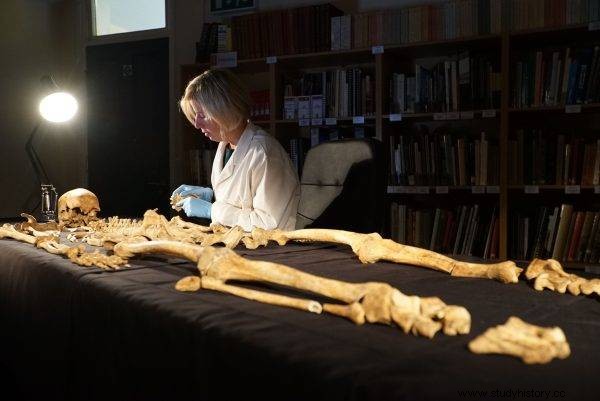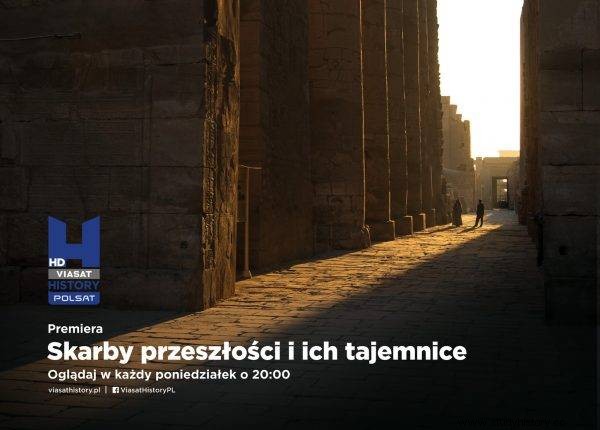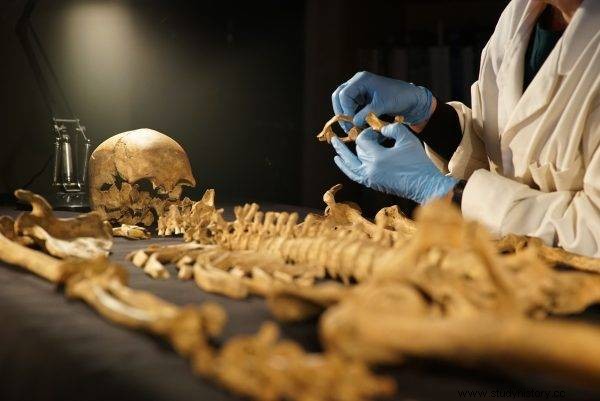In 2004, a cemetery was discovered in York, England, where 80 young men were buried. Most of them had their heads chopped off. Researchers believe they were gladiators.
Life and death struggle to the delight of the public, senators and the emperor himself. Constant training and the stigma of slavery. Such were the realities of the life of Roman gladiators. Those who injured and killed themselves for the amusement of others, fought not only in the Colosseum under the watchful eye of the emperor himself. Gladiators entertained the crowd in all parts of the Roman empire. Also in the fringes . This is evidenced by an unusual find in York, England. In 2004, researchers found the graves of 80 men there - most of them with their heads chopped off. According to scientists, they were gladiators who shed their blood to the delight of the crowds in this former Roman province.
Scientists on the trail of the secrets of the past
Thanks to modern techniques of examining remains and DNA, today it is possible to very accurately answer the question of who the people buried in ancient cemeteries were and where they came from. The results of this research will be known to viewers of the latest series of historical documents "Treasures of the past and their secrets" on the Polsat Viasat History channel. Premiere on weekdays from Monday, July 18 at 20:00

Thanks to modern techniques of examining the remains and DNA, today it is possible to very accurately answer the question of who the people buried in ancient cemeteries were and where they came from.
The first episode, in which scientists will try to unravel the mystery of the biblical Tower of Babel, will air on July 18 at 8 p.m. . The authors of the series will also look at, among others the secrets of Stonehenge and the people buried in the stone circle and the mysterious graveyard of York gladiators .
Provincial slaughter
York - called Ebocarum in Roman times - located in northern England, played an extremely important role on the map of Roman conquests. It was here in the first centuries of our era that the main military base of the Roman army was located . Even emperors - incl. Emperor Septimius Severus, who died here in 211. In turn, Constantine the Great was proclaimed emperor by his legionnaires in York.

The latest historical documentary series "Treasures of the past and their secrets" from July 18 on Polsat Viasat History.
Roman Britain, inhabited by imperial citizens from the continent or locals cooperating with the imperial administration, dotted with a network of cobbled roads and forts, fenced off by Hadrian's Wall from the brave Picts of Caledonia (today's Scotland), also needed a Roman way of life and Roman entertainment. Among them could not miss the most popular one - circus performances and gladiator fights . With the organization of the games in mind, especially in the event of visits by eminent guests from the continent, wooden amphitheatres grew in the forts and cities of Britain, where animals and people could be brutally skirted in any configuration. The important thing is that they fought for entertainment - and to death.
Victims of mass execution
In 2004, a mysterious cemetery was discovered during construction works in the center of the former Roman Ebocarum. The remains of as many as 80 tall, well-built men were discovered there. They died relatively young. The oldest were about 45 years old at the time of their death . Most of the bodies showed signs of a hammer blow on the skull. A large number of them had their heads severed. Initially, this prompted scientists to argue that they are dealing with the graves of people murdered in a mass execution such as local people or Picts. The burials were located on the outskirts of the city, across the river, where there was a large cemetery in Roman times. There was a military base on the other side.
Among the preliminary hypotheses there was also the supposition that could have been a legionnaires' graveyard. This theory, however, turned out to be improbable. The soldiers would not be buried within the city limits. Rather, their bodies would be transported to their homeland.
In the graves in York, apart from skeletons, additional equipment was discovered - incl. food for the deceased on the way to the other world, and coins. This could indicate that the dead came from aristocratic circles. It was therefore assumed that the burial ground was high-born rebels from the provinces, whose rebellion was brutally pacified at the behest of Emperor Caracalla. However, detailed research has shown that the truth may be quite different.
Fangs and claws
First of all, it turned out that many of the men killed were not of local origin . The remains belonged, among others, to to people from North Africa or the Middle East. So at least some of them came to York from very far away.

Many of the bones had signs of serious wounds, spear or hammer blows.
Much of the bones showed signs of serious wounds, spear strikes, and hammer blows. The breakthrough was the discovery of a body wounded by ... lion's fangs and claws . Fights with animals usually took place in arenas. Perhaps a wild cat from distant Africa was brought to confront the unfortunate, who died as a result of tearing out a piece of meat - especially for the visit of some important Roman persona.
Also, a hammer blow (to finish off the wounded) and decapitation (just before or after death) were a typical end to gladiatorial skirmishes. What's more, research has shown that many of the men buried in York had more developed right arm muscles. As Roman chroniclers already pointed out, it was a characteristic feature of gladiators raised and trained from adolescence to combat.
If this hypothesis is true, York is home to the world's largest currently known gladiatorial graveyard . A similar one - where skulls smashed with hammers and severed from the torso were also found - were found in Ephesus, Turkey.
Celebrity killing
In many graves, scientists have found traces of meat:horse or beef. This would show that the deceased were given lavish funeral banquets. This is how aristocrats were buried in Rome, hence the researchers originally believed that this is what they are dealing with. However, this is not clear cut. Lofty and costly funeral ceremonies also happened in the case of gladiators. Slaves who had earned their credit in the arena gained fame and prestige. And over time, freedom and wealth as well. The status of some is comparable to that of today's soccer stars.
The historical context also confirms the "gladiatorial" theory. York in the first centuries of our era was one of the most important Roman centers in the British Isles. The very fact that even emperors have visited here says it all about it. The discovery from England also confirms the cosmopolitan character of the Roman state, which consistently introduced its own culture, legal order, as well as customs and entertainment even in the farthest corners. Also the cruelest.
"Treasures of the past and their secrets" on the Polsat Viasat History channel. Premiere on weekdays from Monday, July 18 at 20:00
